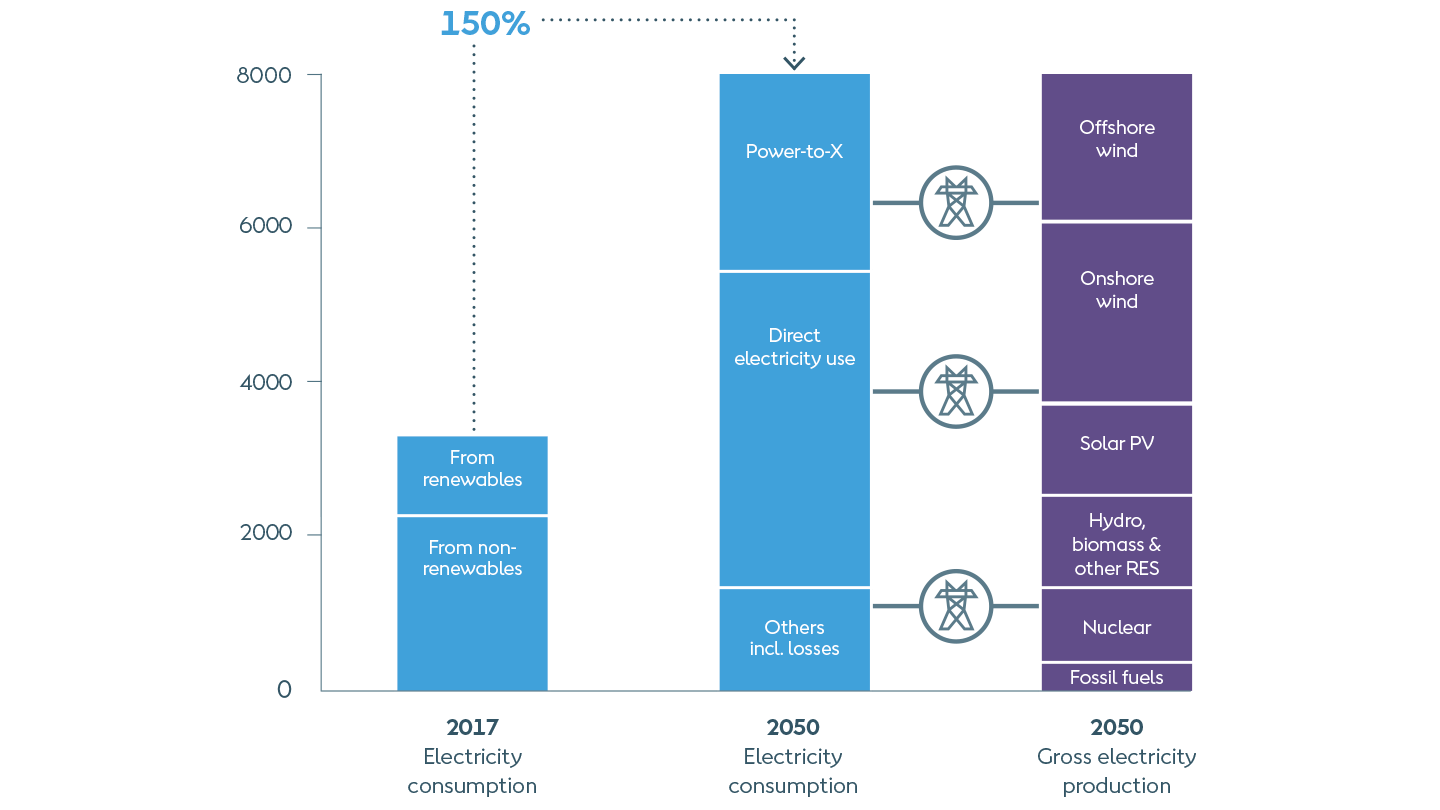Introduction and summary
It is the ambition of the new European Commission to at least halve EU greenhouse gas emissions by 2030 and then to reach net-zero by 2050, to help limit global climate change to 1.5°C, as is the objective of the Paris Agreement.
This marks a significant increase from the previous EU climate targets of a 40% reduction by 2030 and the vague policy ambition of 80-95% reduction by 2050. This is the goal of the ‘Green Deal for Europe’.
Decarbonising Europe presents a two-fold challenge: accelerating the transition to renewables in the power sector where fossil fuels are essentially replaced well before 2050 – whilst also phasing out fossil fuels in industry, transport and heating through both direct electrification and indirect electrification by power-to-X technologies, using electricity to produce sustainable, green fuels.
This transformation will increase European electricity demand by a factor of up to 2.5 towards 2050, according to the European Commission (EC) scenario analysis, even with ambitious and necessary energy efficiency measures implemented.

